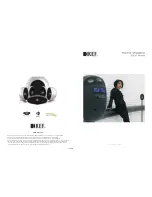
Form #: SDS 853027
Revised:
05/14/15
Supersedes: NEW
ECO #:
1001584
SAFETY DATA SHEET
IV. FIRST AID MEASURES
Inhalation:
Sulfuric Acid: Remove to fresh air immediately. If breathing is difficult, give oxygen. Consult a physician
Lead: Remove from exposure, gargle, wash nose and lips; consult physician.
Ingestion:
Sulfuric Acid: Give large quantities of water; do not induce vomiting or aspiration into the lungs may occur and can cause permanent injury or death;
consult a physician
Lead: Consult physician immediately.
Skin:
Sulfuric Acid: Flush with large amounts of water for at least 15 minutes; remove contaminated clothing completely, including shoes.
If symptoms persist, seek medical attention. Wash contaminated clothing before reuse. Discard contaminated shoes.
Lead: Wash immediately with soap and water.
Eyes:
Sulfuric Acid and Lead: Flush immediately with large amounts of water for at least 15 minutes while lifting lids
Seek immediate medical attention if eyes have been exposed directly to acid.
V. FIRE FIGHTING MEASURES
Flash Point:
N/A
Flammable Limits:
LEL = 4.1% (Hydrogen Gas)
UEL = 74.2% (Hydrogen Gas)
Extinguishing Media:
Carbon dioxide; foam; dry chemical. Avoid breathing vapors. Use appropriate media for surrounding fire.
Special Fire Fighting Procedures:
If batteries are on charge, shut off power. Use positive pressure, self-contained breathing apparatus. Water applied to electrolyte generates
heat and causes it to spatter. Wear acid-resistant clothing, gloves, face and eye protection.
Note that strings of series connected batteries may still pose risk of electric shock even when charging equipment is shut down.
Unusual Fire and Explosion Hazards:
Highly flammable hydrogen gas is generated during charging and operation of batteries. To avoid risk of fire or explosion, keep sparks or other
sources of ignition away from batteries. Do not allow metallic materials to simultaneously contact negative and positive terminals of cells and
batteries. Follow manufacturer's instructions for installation and service.
VI. PRECAUTIONS FOR SAFE HANDLING AND USE
Spill or Leak Procedures:
Stop flow of material, contain/absorb small spills with dry sand, earth, and vermiculite. Do not use combustible materials. If possible, carefully
neutralize spilled electrolyte with soda ash, sodium bicarbonate, lime, etc. Wear acid-resistant clothing, boots, gloves, and face shield. Do not
allow discharge of unneutralized acid to sewer. Acid must be managed in accordance with local, state, and federal requirements.
Consult state environmental agency and/or federal EPA.
VII. HANDLING AND STORAGE
Handling:
Unless involved in recycling operations, do not breach the casing or empty the contents of the battery.
There may be increasing risk of electric shock from strings of connected batteries.
Keep containers tightly closed when not in use. If battery case is broken, avoid contact with internal components.
Keep vent caps on and cover terminals to prevent short circuits. Place cardboard between layers of stacked automotive batteries to avoid damage and short circuits.
Keep away from combustible materials, organic chemicals, reducing substances, metals, strong oxidizers and water. Use banding or stretch wrap to secure items for
shipping.
Storage:
Store batteries in cool, dry, well-ventilated areas with impervious surfaces and adequate containment in the event of spills. Batteries should
also be stored under roof for protection against adverse weather conditions. Separate from incompatible materials. Store and handle only
in areas with adequate water supply and spill control. Avoid damage to containers. Keep away from fire, sparks and heat. Keep away from metallic objects which
could bridge the terminals on a battery and create a dangerous short-circuit.
Charging:
There is a possible risk of electric shock from charging equipment and from strings of series connected batteries, whether or not being charged. Shut-off power to
chargers whenever not in use and before detachment of any circuit connections. Batteries being charged will generate and release flammable hydrogen gas.
Charging space should be ventilated. Keep battery vent caps in position. Prohibit smoking and avoid creation of flames and sparks nearby.
Wear face and eye protection when near batteries being charged.
Page 2
For expanded detailed info, download the PDF online at...
http://www.teslaind.com/PDF/chart/Tesla-Safety-Data-Sheet.pdf
or go to
http://www.teslaind.com/support-manuals.php
and click on
“Battery Safety Data Sheet” link under “Battery Info” heading.
or use the QR Code to the right.





































